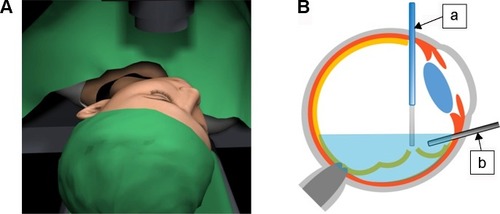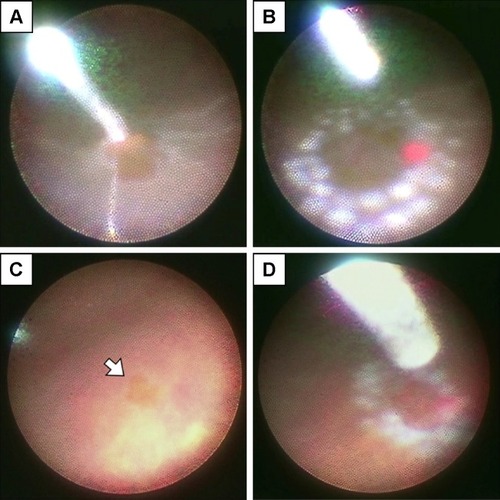Figures & data
Figure 1 Procedure of ophthalmic endoscope-guided subretinal fluid drainage in pars plana vitrectomy for RRD.
Abbreviation: RRD, rhegmatogenous retinal detachment.

Figure 2 Representative images under the 25-gauge ophthalmic endoscope.

Table 1 Characteristics of 127 eyes of 127 patients who underwent endoscope-assisted vitrectomy
Table 2 Overall and comparison of postoperative success rates between 23- and 25-gauge group
Table 3 Visual acuity outcomes
Table 4 Comparison of surgical time between 23- and 25-gauge group in different surgical procedures
Table 5 Overall intraoperative and postoperative complication rates and comparison between 23- and 25-gauge group
